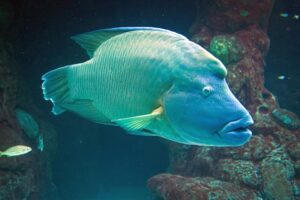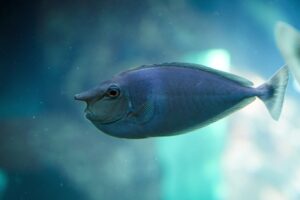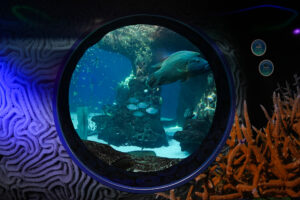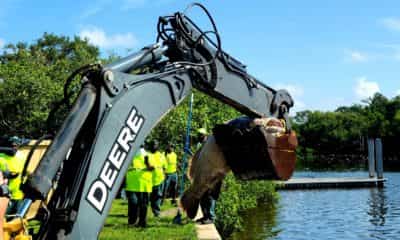Uncategorized
Florida Aquarium unveils new Indo-Pacific exhibit

The Florida Aquarium has successfully transformed its second-largest habitat into an Indo-Pacific wonderland, showcasing thousands of vibrant new fish. This exhibit, located in the Heart of the Sea habitat, now offers visitors a glimpse into the rich marine life diversity from Australia.
Over the past week, the Tampa aquarium has introduced 26 different species of fish into the habitat. Among these are rarely seen species such as the Māori wrasse, gold goatfish, spotted unicornfish, blue speckled grouper, emperor angelfish and giant squirrelfish. Additionally, various species of butterfly fish and a large school of fusiliers have been added to the exhibit.
“These are some of the most amazing fish our guests may ever see in their lifetimes,” said Cristy Barrett, Associate Curator at the Florida Aquarium, in a prepared statement. “They’re from Australia and their colors are so vibrant. We’re delighted with how well they are adjusting. It’s incredibly rewarding to see them thriving and interacting in their new environment.”
The introduction of the new fish was a complex and collaborative effort, involving more than 20 dedicated team members who worked late into the night to ensure the safe acclimation of the new arrivals. The fish underwent rigorous quarantine procedures before being moved to their new home in April.
 The transformation also involved relocating many of the native fish previously housed in the Heart of the Sea habitat. Over the past two months, species such as tarpon, yellowtail snapper, and rooster hogfish have been carefully moved to the Aquarium’s largest habitat – Coral Reef. Some original residents of the habitat, including bonnethead sharks, honeycomb stingrays, a southern stingray and a loggerhead sea turtle remain in the exhibit, now cohabiting with their new Indo-Pacific neighbors.
The transformation also involved relocating many of the native fish previously housed in the Heart of the Sea habitat. Over the past two months, species such as tarpon, yellowtail snapper, and rooster hogfish have been carefully moved to the Aquarium’s largest habitat – Coral Reef. Some original residents of the habitat, including bonnethead sharks, honeycomb stingrays, a southern stingray and a loggerhead sea turtle remain in the exhibit, now cohabiting with their new Indo-Pacific neighbors.
The Heart of the Sea habitat reopened to the public today after being closed for a few days to allow for the careful acclimation of the new fish and to ensure their well-being.
“This habitat now features animals that people from this area would never normally see,” Barrett said. “Everybody is just schooling really well and everybody looks amazing.”








